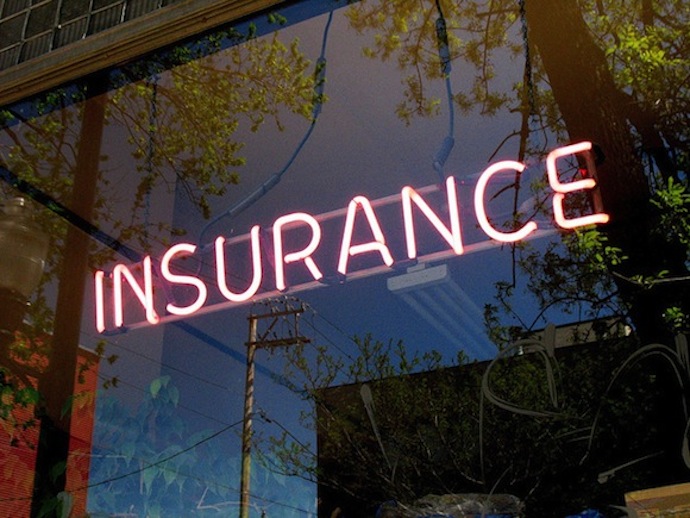We all know that losing our high-value belongings would be a huge pain. Not only is there the sentimental type of loss, but having to replace costly items out-of-pocket also bears a financial burden.
Storage unit insurance is one way to protect yourself from loss of inventory if something happens to your valuable items while they’re in storage. You may not be able to recover your items, but at least you will be compensated for your loss.
Here’s what you need to know about storage unit insurance, storage facility insurance requirements, and the difference between protection and insurance plans.
What is storage unit insurance coverage?
Storage unit insurance for property stored outside your home will help you recoup any losses incurred and provide peace of mind that there will be no expensive out-of-pocket replacements if anything goes wrong.
Some self-storage facilities offer in-house storage facility insurance coverage.
Other facilities require insurance for storage facility access, so you need to acquire a property insurance policy elsewhere.
In the latter case, our personal property coverage limit must include enough coverage for items stored in your unit.
For example, if you store expensive items like jewelry and high-value items like artwork, and the contents of your unit are worth $300,000, you’ll need a personal property insurance limit of at least $300,000. In this scenario, you’ll probably want 24/7 security coverage.
But if you’re using your storage to store $10,000 worth of dirtbikes and camping gear, then your personal property limit only needs to be 10 grand.
What does self-storage insurance cover?
Storage unit insurance covers everything from physical damage, be it weather-related damage or vermin damage coverage, to theft.
Most policies offer coverage for damage caused by:
- Explosions
- Pest Damage
- Damage from Mold
- Damage from Leaks
- Fire or lightning
- Riot or civil commotion
- Water damage
- Smoke
- Theft
- Vandalism
- Windstorm or hail
However, policies vary from location to location, especially when insuring your items in storage through the storage facility’s insurance coverage. Ask your facility about the kinds of damage they cover and the maximum cost of damage their policy reimburses.
What does self-storage insurance not cover?
Basic storage unit insurance does not cover losses due to:
- Flood Damages
- Earthquake Damage
- Mudslides
If you reside in an area where natural disasters are more common, consider purchasing additional coverage from an insurance company.
How much does self-storage insurance cost?
When it comes to storage unit insurance, you can expect to pay premiums from $8 to $38 per month for coverage of $10,000, depending on the provider, in addition to the storage unit price. This is relatively low compared to the personal property coverage with a standard renters’ or homeowners policy.
Is self-storage insurance required?
Most self-storage facilities require tenants to have insurance for their stored belongings. However, you do not have to buy the insurance from them if you don’t want to. You can find and purchase storage unit insurance from a third-party company, then show proof of coverage to the facility.
You may also not need storage tenant insurance if you are already covered by your homeowners or renters’ insurance. Just make sure to show proof of insurance coverage when renting your unit. Remember that such policies often have coverage limits for items stored outside the home as low as 10% to 20% of the total value. That might not be sufficient if you are storing valuables like jewelry, antique furniture, large appliances or even collectibles like vinyl records. Adding self-storage insurance could make up the difference.
Differences between storage unit insurance and a tenant protection plan
Storage unit insurance is more comprehensive than a protection plan, as it protects against damage caused by events like fires or storms.
A tenant protection plan is a type of coverage offered by self-storage facilities that protects tenants from building damage or loss. For an additional monthly fee, the plan agrees to compensate the tenant for property damage or loss within specified coverage limits.
Tenant protection plans and tenant insurance plans seem very similar, but there is one key difference. Tenant protection plans are not regulated by the state like insurance policies are.
Need Self-Storage Insurance Coverage for Your Unit? SelfStorage.com Can Help
Most storage facilities offer insurance directly. These storage insurance policies offer basic coverage, with a typical coverage limit of $2,500-$5,000. But if the items you’re storing in your unit cost more than $5k, an external self-storage insurance policy may be the way to go.
An independent insurance provider will offer personal property coverage up to $15,000-$20,000. The monthly premiums of these policies range from an average of $20 to $30.
That said, whether you’re storing fragile items or just your standard personal items, filing an insurance claim and getting the damage covered is a time-consuming pain, regardless of who your policyholder is.
And even if they pay you out of the value of your damaged belongings, those irreplaceable items might be hard or impossible to track down, regardless of how much insurance money you’re working with.
Our suggestion? Preventative maintenance. Find a storage facility with all the amenities and security features you need to keep your valuables safe. A climate-controlled storage unit with 24-hour on-site security offers the best protection against extreme weather and theft.
And even if you’re covered by insurance, proving your claim can be tricky without evidence. We suggest finding a storage unit with security cameras to be sure you’ve covered your property.
SelfStorage.com hosts an easy-to-use Storage Unit Locator Tool that can help you find a storage unit near you with all the features you need. How? Our site searches the best units in your area and tailors the results based on the detailed search parameters you set.
You can narrow your search results to facilities that offer climate-controlled units, on-site security personnel, and cameras, all organized from lowest price to highest!
Image courtesy of WTIC-TV, WVIT-TV, Flickr/David Hilowitz, Flickr/James Vaughan







